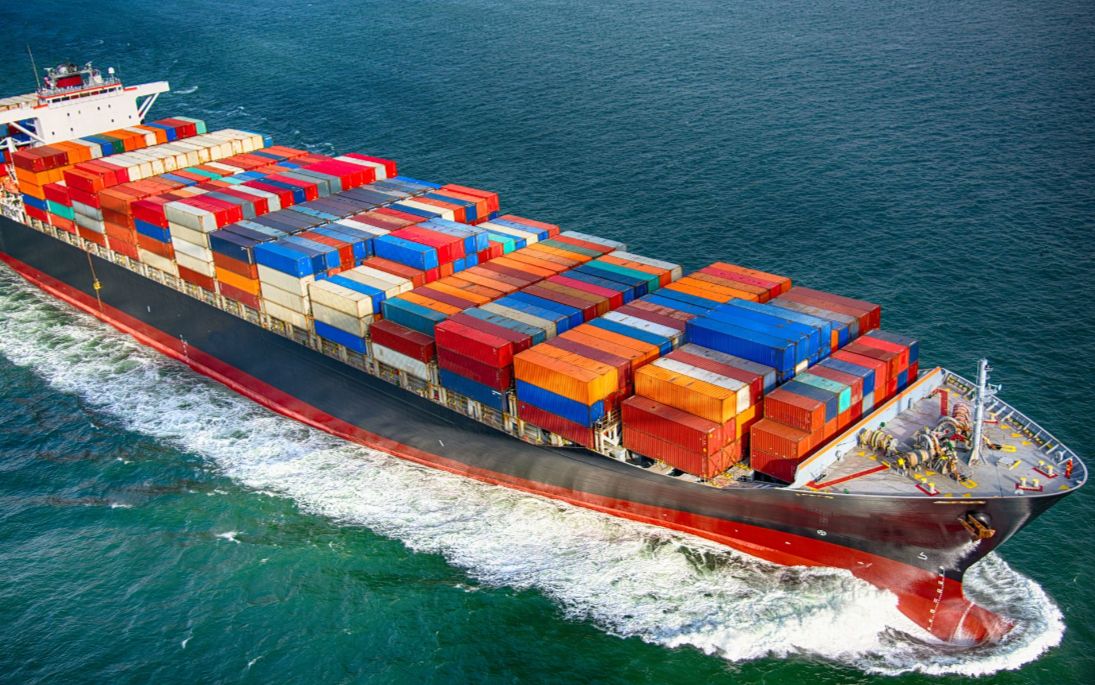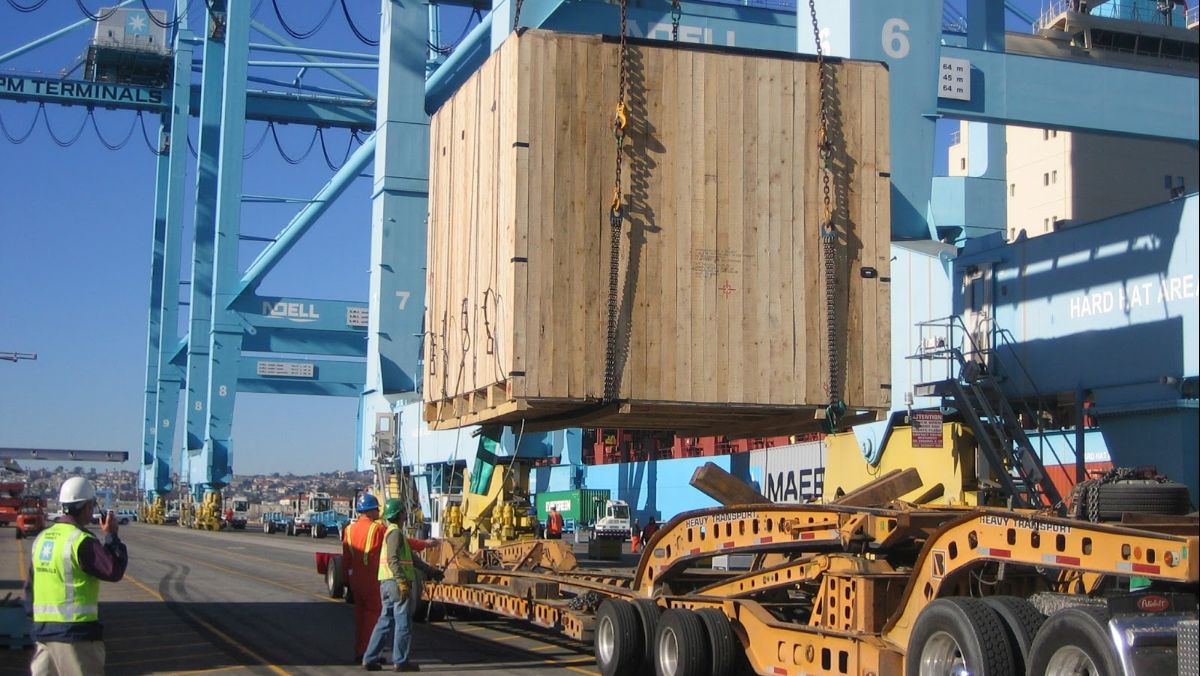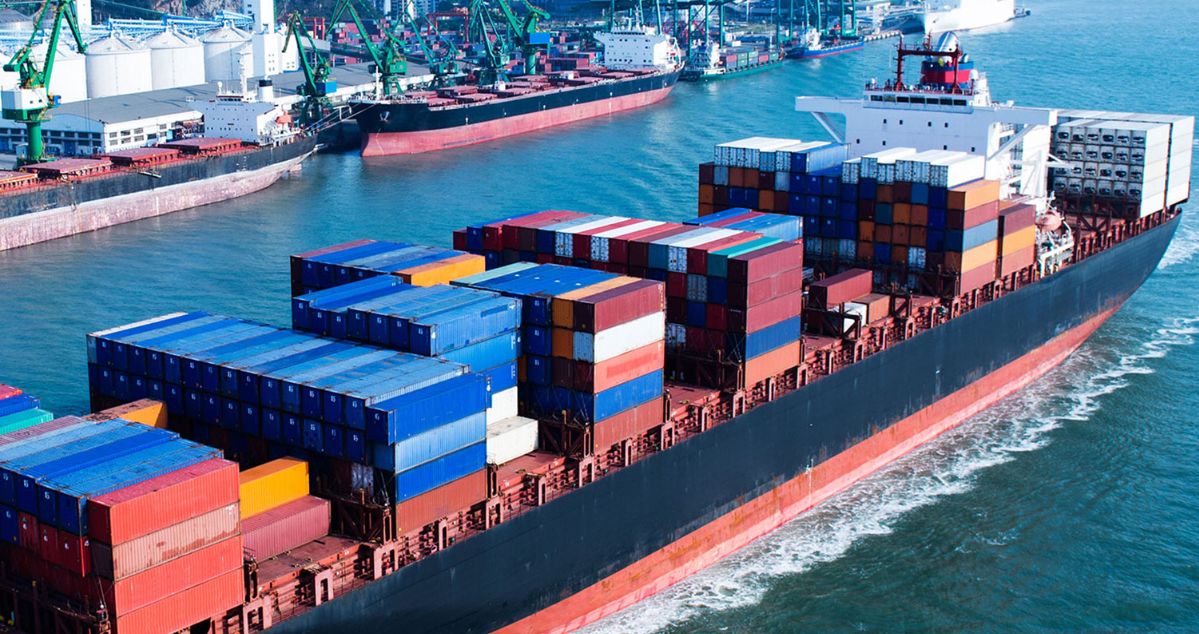International Sea Cargo
We provide efficient and secure shipping solutions for businesses worldwide
Understanding International Sea Cargo: A Comprehensive Guide

International sea cargo plays a critical role in the global economy, facilitating the movement of goods across continents. As the backbone of international trade, sea cargo services ensure that businesses can efficiently transport products to markets worldwide. This article delves into the intricacies of international sea cargo, covering its importance, processes, types, and benefits.
International sea cargo is a cornerstone of global trade, enabling businesses to transport goods across the world efficiently and cost-effectively. Understanding the intricacies of sea cargo shipping, from the types of cargo to the key players involved, can help businesses optimize their logistics operations and navigate the complexities of international shipping. As the industry continues to innovate and evolve, businesses that stay informed and adaptable will be well-positioned to capitalize on new opportunities and achieve success in the global marketplace.
The Importance of International Sea Cargo

International sea cargo is the backbone of global trade, facilitating the movement of goods across continents and oceans. As a crucial component of the supply chain, sea cargo services enable businesses to transport products efficiently and cost-effectively. This article delves into the importance of international sea cargo, exploring its role in the global economy, its advantages, challenges, and future trends.
The Role of International Sea Cargo in Global Trade
1. Facilitating Global Commerce
International sea cargo services play a vital role in global commerce by enabling the exchange of goods between countries. Approximately 90% of the world’s trade is conducted via sea transport, highlighting its significance in the global economy. Sea cargo services connect producers and consumers, allowing businesses to access international markets and expand their customer base.
2. Economic Growth and Development
Sea cargo contributes significantly to economic growth and development. By providing access to international markets, it promotes trade and investment, leading to job creation and economic diversification. Developing countries, in particular, benefit from sea cargo services as they can export raw materials and import manufactured goods, fostering industrialization and economic advancement.
3. Supporting Supply Chain Efficiency
The efficiency of global supply chains heavily relies on international sea cargo. It ensures the timely and cost-effective movement of goods, enabling businesses to maintain inventory levels, meet customer demand, and reduce operational costs. Efficient sea cargo services minimize delays and disruptions, enhancing the overall resilience of supply chains.
Advantages of International Sea Cargo
1. Cost-Effectiveness
One of the primary advantages of sea cargo is its cost-effectiveness. Compared to air freight, sea transport is significantly cheaper, especially for bulky and heavy goods. The ability to transport large volumes of cargo at lower costs makes sea transport an attractive option for businesses looking to optimize their logistics expenses.
2. High Capacity
Sea cargo vessels have a high carrying capacity, allowing them to transport substantial quantities of goods in a single voyage. This is particularly beneficial for industries such as manufacturing, agriculture, and mining, where large volumes of raw materials and finished products need to be moved efficiently.
3. Versatility
Sea cargo services are versatile, capable of handling a wide range of products, including perishable goods, hazardous materials, and oversized cargo. Specialized vessels, such as refrigerated ships, tankers, and bulk carriers, cater to specific types of cargo, ensuring safe and efficient transportation.
4. Environmental Impact
Sea transport has a lower carbon footprint per ton-mile compared to air and road transport. Ships are more fuel-efficient and can carry larger quantities of goods, making sea cargo a more environmentally friendly option. The maritime industry is also making strides in adopting green technologies and practices to further reduce its environmental impact.
Challenges in International Sea Cargo
1. Weather and Environmental Conditions
Severe weather conditions, such as storms and hurricanes, can disrupt sea transport, causing delays and posing risks to cargo safety. Navigating through harsh marine environments requires robust planning and risk management strategies.
2. Piracy and Security Risks
Certain shipping routes are prone to piracy, threatening the safety of vessels and crew. Implementing security measures, such as naval patrols and onboard security systems, is essential to mitigate these risks.
3. Regulatory Compliance
Navigating complex customs regulations and international trade laws can be challenging. Compliance with varying regulations across different countries requires meticulous documentation and coordination.
4. Port Congestion
Busy ports often experience congestion, leading to delays in cargo handling and delivery. Efficient port operations and infrastructure development are crucial to addressing this challenge.
Future Trends in International Sea Cargo
1. Digitalization and Automation
The sea cargo industry is embracing digitalization and automation to enhance efficiency and transparency. Technologies such as blockchain, Internet of Things (IoT), and artificial intelligence (AI) are being integrated into shipping operations to streamline processes, improve tracking, and optimize routes.
2. Sustainability Initiatives
The maritime industry is increasingly focusing on sustainability, with initiatives aimed at reducing carbon emissions and adopting eco-friendly practices. The use of alternative fuels, energy-efficient technologies, and green port operations are some of the measures being implemented to promote sustainable sea transport.
3. Smart Ports
The development of smart ports, equipped with advanced technologies and automation, is revolutionizing cargo handling and port operations. Smart ports enhance operational efficiency, reduce turnaround times, and improve the overall customer experience.
4. Autonomous Ships
The concept of autonomous ships is gaining traction, with the potential to revolutionize the sea cargo industry. Unmanned vessels equipped with advanced navigation and control systems can enhance safety, reduce operational costs, and improve efficiency.
International sea cargo is indispensable to global trade, providing a cost-effective, high-capacity, and versatile means of transporting goods across the world. Despite the challenges it faces, the sea cargo industry continues to evolve, driven by technological advancements and sustainability initiatives. As the backbone of global commerce, international sea cargo will remain crucial in supporting economic growth, supply chain efficiency, and international cooperation. By understanding its importance and staying abreast of emerging trends, businesses can leverage sea cargo services to thrive in the global marketplace.
The Sea Cargo Shipping Process

The sea cargo shipping process is a complex and meticulously coordinated operation that enables the efficient movement of goods across the globe. Understanding this process is essential for businesses looking to optimize their logistics and ensure smooth international trade. This article provides a deep dive into the sea cargo shipping process, covering each stage from booking to delivery.
1. Booking and Documentation
Booking Space on a Vessel
The first step in the sea cargo shipping process is booking space on a vessel. This involves selecting a shipping line and a specific vessel that meets the requirements of the cargo. Factors such as the type of goods, the volume, and the destination are considered when choosing the vessel. Shipping lines provide schedules and rates, allowing shippers to choose the most suitable option.
Preparing Documentation
Accurate and complete documentation is crucial for the smooth movement of cargo. Key documents include:
- Commercial Invoice: Provides details of the transaction, including the description, quantity, and value of the goods.
- Bill of Lading (B/L): A contract between the shipper and the carrier, serving as a receipt for the cargo and a document of title.
- Packing List: Lists the contents of each package, including weights and dimensions.
- Certificate of Origin: Indicates the country where the goods were manufactured.
- Insurance Certificate: Provides proof of insurance coverage for the cargo.
These documents are essential for customs clearance and must comply with the regulations of both the exporting and importing countries.
2. Export Customs Clearance
Before goods can be shipped, they must clear customs in the country of origin. This involves submitting the necessary documentation to customs authorities and ensuring compliance with export regulations. Customs officials inspect the documentation and may also physically inspect the cargo to verify its contents. Once cleared, the cargo is authorized for export.
3. Transportation to the Port
After customs clearance, the cargo is transported to the port of departure. This stage involves coordinating with local transport providers, such as trucking companies, to move the goods from the warehouse or manufacturing facility to the port. Ensuring timely transportation is critical to meet the vessel’s departure schedule.
4. Loading and Stowage
Loading the Cargo
At the port, the cargo is loaded onto the vessel. This process involves several steps:
- Containerization: For containerized cargo, goods are packed into shipping containers, which are then sealed and transported to the loading area.
- Break Bulk Handling: For non-containerized cargo, such as heavy machinery or oversized items, specialized equipment is used to load the goods directly onto the vessel.
Stowage Planning
Effective stowage planning is essential to maximize the use of space and ensure the stability of the vessel. Stowage plans take into account the type of cargo, weight distribution, and unloading sequence at the destination port. Proper stowage minimizes the risk of damage during transit and facilitates efficient unloading.
5. Sea Transport
The sea transport stage involves the actual movement of the vessel from the port of departure to the destination port. During this phase, several factors are managed to ensure a safe and timely journey:
- Navigational Planning: The vessel’s route is carefully planned to avoid hazards such as rough weather, piracy-prone areas, and congested shipping lanes.
- Onboard Operations: Crew members monitor the vessel’s systems, perform regular maintenance, and manage the cargo to ensure its safety during the voyage.
- Communication: Continuous communication with shipping line offices, port authorities, and other stakeholders ensures that any issues are promptly addressed.
6. Import Customs Clearance
Upon arrival at the destination port, the cargo must clear customs before it can be unloaded. This process involves:
- Document Submission: The necessary import documentation, including the bill of lading, commercial invoice, and packing list, is submitted to customs authorities.
- Inspection: Customs officials may inspect the documentation and physically examine the cargo to verify compliance with import regulations.
- Duty and Tax Payment: Import duties and taxes are calculated based on the value and classification of the goods. Payment of these fees is required before the cargo can be released.
7. Unloading and Delivery
Unloading at the Port
Once customs clearance is complete, the cargo is unloaded from the vessel. This process involves:
- Discharge Operations: Containers and other cargo are carefully unloaded using cranes and other port equipment.
- Inspection and Sorting: The cargo is inspected for any damage that may have occurred during transit and sorted for onward transportation.
Final Delivery
The final stage of the sea cargo shipping process is the delivery of the goods to their ultimate destination. This involves:
- Arranging Transportation: Local transport providers, such as trucking or rail companies, are coordinated to move the cargo from the port to the consignee’s location.
- Delivery Confirmation: The consignee receives the goods and confirms their condition and quantity, completing the shipping process.
The sea cargo shipping process is a vital component of global trade, involving a series of meticulously coordinated steps to ensure the efficient and safe movement of goods across international borders. From booking and documentation to transportation, customs clearance, and final delivery, each stage plays a critical role in the success of the shipping operation. By understanding and optimizing these processes, businesses can enhance their logistics efficiency, reduce costs, and ensure timely delivery of their products to markets worldwide.
The Pillars of International Sea Cargo

International sea cargo is the lifeline of global trade, enabling the movement of goods across oceans and connecting markets worldwide. The effectiveness of sea cargo services rests on several foundational pillars that ensure efficiency, reliability, and sustainability. This article explores the key pillars of international sea cargo and their role in facilitating smooth and seamless global trade.
1. Infrastructure
The backbone of international sea cargo is its extensive infrastructure, which includes ports, shipping lanes, and vessels.
- Ports: Major ports around the world serve as critical hubs for the loading, unloading, and storage of cargo. These ports are equipped with advanced facilities, such as cranes, container terminals, and warehousing, to handle large volumes of goods efficiently.
- Shipping Lanes: Well-established maritime routes connect different regions, optimizing the journey of vessels and ensuring timely deliveries.
- Vessels: Modern cargo ships are designed to maximize capacity and efficiency, with specialized vessels for different types of cargo, such as container ships, tankers, and bulk carriers.
2. Logistics and Coordination
Effective logistics and coordination are essential for the smooth operation of international sea cargo.
- Freight Forwarders: These professionals manage the logistics of shipping goods, coordinating with various stakeholders to ensure timely and efficient transport.
- Customs Brokers: Experts in customs regulations, brokers facilitate the clearance of goods, ensuring compliance with all legal requirements and avoiding delays.
- Shipping Lines: Companies that own and operate vessels play a crucial role in maintaining schedules and managing the transport of cargo.
3. Technology and Innovation
Technological advancements are revolutionizing the sea cargo industry, enhancing efficiency, security, and transparency.
- Digitalization: The adoption of digital tools, such as electronic documentation and real-time tracking, streamlines processes and improves communication between stakeholders.
- Automation: Automated systems in ports and on vessels increase productivity and reduce human error.
- Blockchain: This technology enhances transparency and security in the supply chain, ensuring the authenticity and accuracy of transaction records.
4. Sustainability
Sustainability is becoming increasingly important in the sea cargo industry, with a focus on reducing environmental impact and promoting eco-friendly practices.
- Green Shipping: Initiatives such as the use of alternative fuels and energy-efficient technologies aim to reduce carbon emissions from vessels.
- Sustainable Port Operations: Ports are adopting practices such as shore power, which allows ships to turn off their engines while docked, reducing air pollution.
- Waste Management: Effective waste management systems on ships and in ports help minimize the environmental impact of sea cargo operations.
5. Security and Risk Management
Ensuring the safety and security of cargo is paramount in international shipping.
- Piracy Prevention: Measures such as naval patrols, secure shipping routes, and onboard security systems protect vessels from piracy.
- Cargo Security: Advanced security protocols, including container sealing and surveillance, prevent theft and tampering.
- Risk Mitigation: Comprehensive insurance coverage and contingency planning help manage risks associated with sea transport, such as weather disruptions and accidents.
6. Compliance and Regulation
Adhering to international regulations and standards is crucial for the smooth functioning of sea cargo operations.
- Customs Regulations: Compliance with customs laws ensures the legal movement of goods across borders.
- International Maritime Organization (IMO) Standards: The IMO sets global standards for the safety, security, and environmental performance of international shipping.
- Trade Agreements: Bilateral and multilateral trade agreements facilitate the smooth flow of goods between countries by reducing tariffs and trade barriers.
The pillars of international sea cargo—comprehensive infrastructure, efficient logistics, technological innovation, sustainability, security, and regulatory compliance—are essential for supporting global trade. By understanding and strengthening these pillars, businesses and stakeholders in the sea cargo industry can ensure the efficient and reliable movement of goods across the world, driving economic growth and fostering international cooperation.
Recent Posts
TheDailyBlink.com 2024 - Copyright © All rights reserved.
